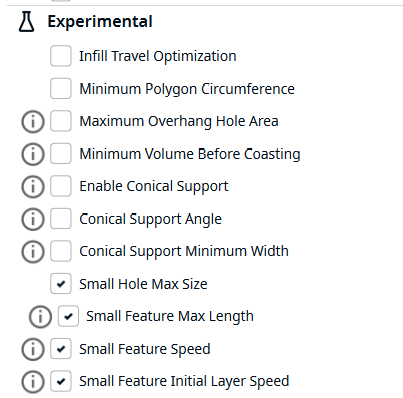This post to document a stringing issue that took me days to figure out. I see it come up from time to time, so I’m sharing it here to have a link for others.
Update to add, @macdylan notes below, the solution described here is baked into the Orca slicer profile? And shows where to find this setting.
This came up while trying to print the dual color benchy featured in my profile pic. I initially did it for fun, but it didn’t turn out clean at first:
Eventually I would figure out this was specifically related to extruding small features. Notice in the picture that it’s the black filament on the parts that are very small by layer that string badly.
It happened even with one-color prints:
These tests were running through all the usual advice. Extra dry filament, retraction settings, fast or slow, different acceleration, etc, etc. Nothing helped. Then I noticed it was fine at the bottom of the tower and got worse at the top.
I then found a experimental settings (Cura 5.9) for “Small Features.” The purpose of this is to detect small extrusions of a given length, then reduce the print speed just for those features:
(You likely need to enable these setting’s visibility:)
By telling it to slow wayyyy down for these extrusions, but otherwise print normally with still a snappy travel speed and acceleration, the stringing went away.
Hindsight theory being that for very small extrusions (I later set it to a Max Feature Length of about 10 mm, or half this), it doesn’t have enough time to extrude, stick, and cool. This results in horrible stringing in a variety of prints where there’s small extrusions.
By enabling this feature in Cura and setting it to slow way down only for them, the rest of the print can proceed quickly but the stringing is significantly reduced on these small features. This is the improvement in the spires straight off the print bed:
And of course, the dual color benchy in my profile photo!








